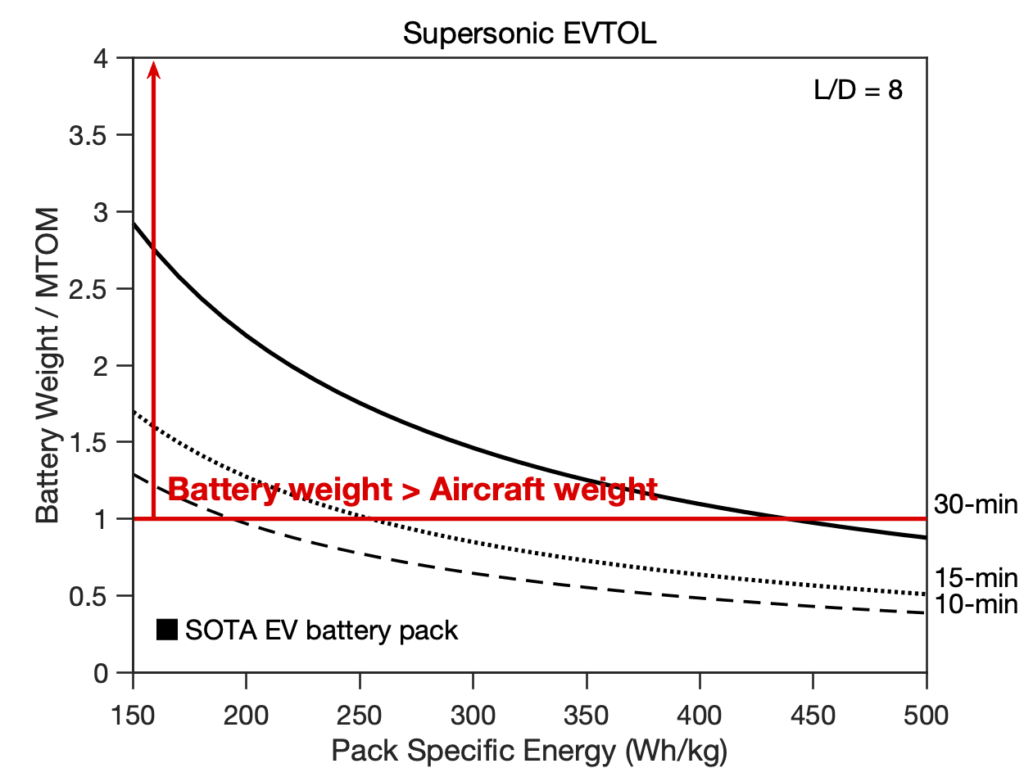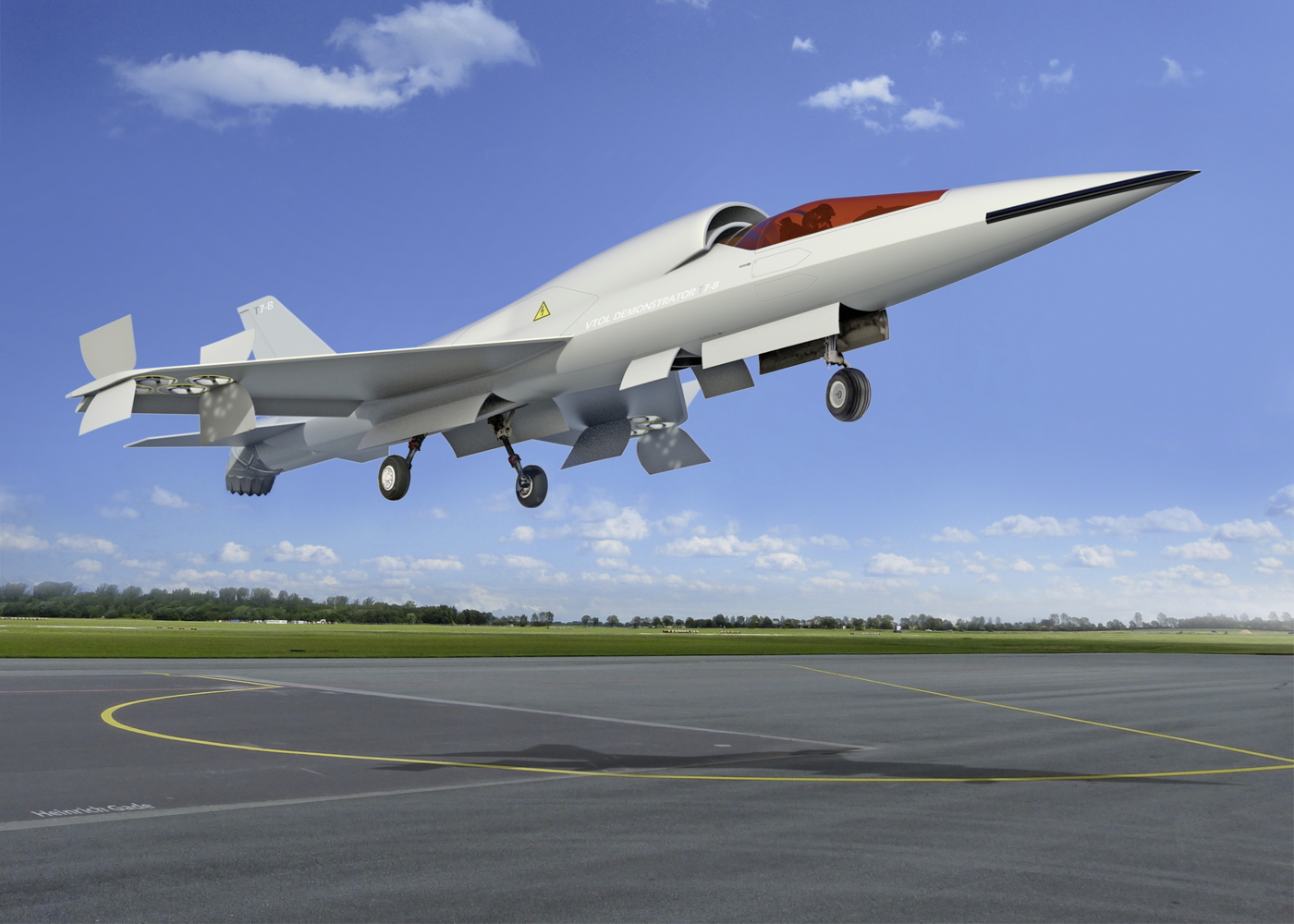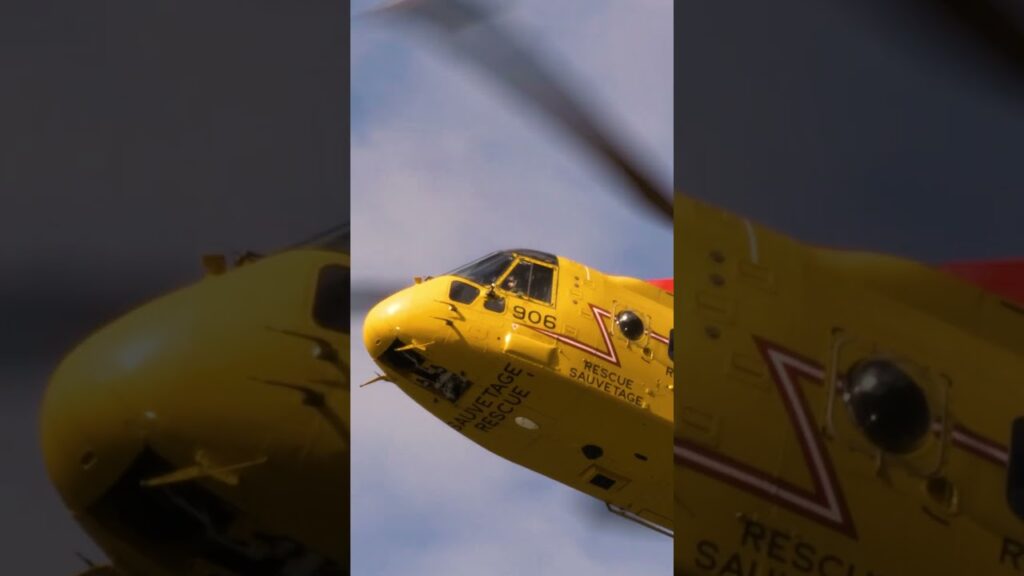A couple of months ago, I made the mistake of suggesting on Twitter that when Elon Musk periodically tweets about wanting to build a supersonic electric VTOL jet, he might be joking.
For the past several years, I’ve been immersed in the electric vertical take-off and landing (eVTOL) space, observing much hand-wringing over whether today’s batteries will be able to fly four people from, say, San Francisco to Tahoe at speeds equivalent to those of a Cessna 182. So the concept of taking an eVTOL aircraft supersonic struck me as preposterous enough to form the basis for a decent running gag.
Elon’s fans quickly informed me, however, that I had vastly overestimated his sense of humor.
After all, they pointed out, this wasn’t just any internet troll I was talking about. This was the prime instigator of the electrification of the global automotive industry. The man who made rockets land on their tails. If anyone could bring a supersonic electric VTOL jet to life, surely it would be Elon.
So I decided to give them the benefit of the doubt. Rather than dismiss the concept out of hand, I would look into what it would take to make supersonic eVTOL a reality. Here’s what I found out.

Supersonic + electric + VTOL = Some really hard problems
First, I established some ground rules for my investigation. Supersonic electric VTOL would mean supersonic and electric and VTOL, not two out of three. As we’ll see later in this article, sticking with just “supersonic electric” or “supersonic VTOL” opens up the design space in some really interesting ways, but it’s pretty clear that Musk is talking about the full monty.
Broadly speaking, there are three hard problems associated with supersonic electric VTOL flight. There’s the problem of creating an electric propulsor that is capable of functioning effectively at supersonic speeds. Then, there’s the problem of designing batteries with both the specific energy necessary for supersonic cruise, and the specific power required for vertical take-offs and landings. Finally, there’s the problem of packaging all of this into a viable supersonic airframe.
Let’s take the propulsor question first. So far, only one supersonic aircraft capable of vertical landings has made it into operational service: the Lockheed Martin F-35B. It’s powered by a Pratt & Whitney F135 afterburning turbofan engine that can produce more than 40,000 pounds of thrust, which it does by burning a whole bunch of fossil fuel.
Such an expeditious method of thrust generation is not available for electric aircraft, and it’s not obvious what a suitable alternative might look like. It won’t look like the ducted fans that are on current eVTOL aircraft like the Lilium Jet, because their blade tip speeds would go supersonic and lose efficiency as they entered the compressible regime approaching Mach 1.0.
Harvest Zhang is a software engineer who has worked on the Wayfinder project at Acubed by Airbus, as well as on Airbus’s Vahana eVTOL and Facebook’s stratospheric solar-powered Aquila drone. My tweet got him thinking about what building a supersonic eVTOL would actually take.
“Turbojets (and more generally low-bypass turbofans) have been the way to go in the supersonic regime, relying on the compression and combustion in the jet engine core to generate the exit velocities required at supersonic speeds,” he told me by email. “You’d have to achieve similar compression and flow shaping without the combustion using electric motor-powered fan/compressor stages” — similar to what’s done in supersonic wind tunnels, he suggested.
Such a propulsion system doesn’t exist yet, but it may eventually. Former NASA engineer and eVTOL evangelist Mark Moore is moving in that direction at his Tennessee-based startup Whisper Aero, which emerged from stealth in July. Moore and Whisper Aero chief operating officer Ian Villa still haven’t shared any details about their novel electric propulsor technology, but they claim it will be able to drive an all-electric, four- to 19-seat “Whisper Jet” to speeds of up to 300 miles per hour (480 kilometers per hour) with “insanely low noise” and “incredible operating costs.”
“I would say that we are on the path to what Elon is talking about more than anybody in the entire electric aircraft industry,” Moore told me after I started exploring the supersonic eVTOL question. Moore, for his part, sees the potential for a supersonic electric aircraft to be “screaming fast” at the very high altitudes where conventional turbofans can’t function because they rely on oxygen from the air for combustion.
“Someday when we have good enough batteries . . . to get up to altitude, because the air’s so thin and high-speed cruise is all parasite drag, you will be able to move really fast with really low power,” he said. “We are on that journey right now with what we’re doing — it’s just that batteries can only do so much right now.”
How much can batteries do, exactly?
Which brings us to the next hard problem in supersonic electric VTOL flight: the batteries. Here, the VTOL requirement makes the problem much harder than it would otherwise be, because hovering flight demands so much power.
For help in understanding the supersonic eVTOL battery requirement, I turned to Carnegie Mellon researchers Venkat Viswanathan and Shashank Sripad, who have been dubbed the “Battery Police” for their work in evaluating battery claims. They recently published a paper in the Proceedings of the National Academies of Sciences (PNAS) examining battery requirements for small, decidedly subsonic eVTOL aircraft, concluding that multiple aircraft designs are approaching technological viability with current lithium-ion batteries.
They took a similar first principles approach to estimating energy consumption for a supersonic eVTOL aircraft, focusing on a few key parameters including the maximum lift-to-drag ratio (L/Dmax). “To understand the technical feasibility, especially from an electrification standpoint . . . this sort of simple analysis is all that’s needed,” Sripad told me.
L/Dmax is typically a low value for supersonic aircraft, in part because they’re subject to wave drag that increases suddenly and dramatically as the vehicle approaches the critical Mach number — the lowest Mach number at which the airflow over some part of the aircraft reaches the speed of sound. Based on historical L/Dmax values for the Lockheed A-12 (precursor to the SR-71) and the Concorde (which are given here as 6.6 and 7.4, respectively), we used L/D ratios of six and eight for the analysis.

The results were generally consistent with what Musk has publicly estimated in the past. At the MIT AeroAstro Centennial Symposium in 2014, he reckoned that batteries with a specific energy of 400 Watt-hours per kilogram, composing 70 percent of the mass of the aircraft, would make a “compelling” aircraft. Viswanathan and Sripad estimated that an aircraft with that mass fraction of 400 Wh/kg batteries at the pack level would be able to cruise for around 10 to 15 minutes at Mach 1.1 at an altitude of 40,000 feet, including a vertical take-off and landing.
Does that mean that supersonic eVTOL flight is just around the corner? Not quite. According to Sripad, current generation lithium-ion batteries are improving at a rate of 3-5% per year. Next-generation lithium-metal batteries promise higher specific energies at the cell level, he said, but “it’s still not clear how lithium-metal batteries will be packaged.” Assuming it’s similar to how lithium-ion batteries are packaged today, that might get them to 350 Wh/kg at the pack level.
“Beyond that, we have to rethink it,” Sripad said. “It has to be some kind of new cathode material — it’s not going to be any of the current cathodes.” While some battery chemistries with higher specific energies exist, they’re not necessarily rechargeable and “much further away in terms of technological readiness,” he said.
Then there’s the question of specific power. Supersonic electric VTOL aircraft don’t just need a lot of stored energy, they also need to be able to discharge it quickly for high-power vertical take-offs and landings. Typically, Sripad said, battery researchers focus first on the specific energy of a new cell chemistry, and only later try to solve for specific power.
“If it has to be a VTOL supersonic jet, then that automatically means you’re trying to solve both the power problem as well as the energy problem together,” he said. “If it’s conventional supersonic, the power problem is not as stringent . . . it’s always going to be the vertical segment that is the limiting factor in terms of power.”
Bringing it all together
Any electric vehicle developer faced with assembling individual battery cells into packs is concerned with minimizing weight while also protecting against damage and thermal runaway. Supersonic electric aircraft developers will have some additional concerns. The thin air at very high altitudes may be great for efficient cruising, but it will also make high-voltage batteries more susceptible to corona discharge — an electrical discharge caused by the ionization of the air surrounding a conductor — so that will need to be considered in electrical system design.
Plus, it’s cold up there. Whatever electrochemical reactions are powering a supersonic eVTOL battery, they’re likely to be much slower at low temperatures. Sripad noted that discharging the battery at a high rate could conceivably generate enough heat to offset this problem, but thermal management will need to be evaluated carefully.
Then there’s the question of where to put batteries equal to 70 percent of its mass on an aircraft designed for supersonic flight. With supersonic aircraft, said Whisper Aero’s Ian Villa, “you have to overcome the transonic drag rise, you’ve got to have really low wave drag. And what that means is that the shape of your aircraft has to be tailored for the boom and to be low drag as you get up to that sonic barrier.”

Functionally, that means that most supersonic aircraft have high fineness ratios — meaning they’re much longer than they are wide — and their fuselages are narrowed where they meet the wing to reduce wave drag. “Things are thinner, so you can’t just shove batteries into nacelles under the wing in the way that [some] eVTOLs do,” Villa said.
The packaging problem also applies to the propulsion system or systems, as separate propulsors may be required for VTOL flight, he added. “Because of the supersonic design constraints, which trend you towards this thin fuselage that’s very fine, very long, you can’t just put propulsors everywhere.”
All of this added up means that a supersonic electric VTOL jet is still a very long way from being practical — which is probably why Musk hasn’t bothered to pursue it yet. During his infamous weed-smoking podcast with Joe Rogan in 2018, Musk acknowledged that “an electric airplane isn’t necessary right now. Electric cars are important, solar energy is important, stationary storage of energy is important. These things are much more important than creating electric supersonic VTOL.”
“We will definitely get there, but part of success is taking the right technology pieces at the right time to achieve the market capability that can matter now,” said Mark Moore. “We’re not in the age of supersonic electric VTOL yet, but there’s so much opportunity space to be developing products towards that end.”
Best two out of three
If supersonic and electric and VTOL is too much to ask for at this point, some less ambitious combination of those properties could be viable in the nearer term. Harvest Zhang pointed out that aiming for supersonic flight incurs the “double whammy” of extremely high drag, plus traditional ducted fan designs not working for supersonic flight.
“Making a supersonic eVTOL is thus likely to be more of a step change in difficulty than a gradual ramp compared to a subsonic, M0.8-ish eVTOL (which could conceivably achieve L/Ds in the 12-15 range),” he wrote. “The high-speed subsonic option makes so much more sense.”
Ashish Bagai, principal at buGi Aero and a specialist in advanced vertical flight concepts, suggested that a hydrogen-based design that uses an advanced fuel cell for vertical and low-speed flight, complemented by a propulsion unit that uses hydrogen as a combustible fuel to produce thrust for high-speed/supersonic flight, may be a viable option.
“It’s cheating a bit, because you’re not operating in electric mode at both ends of the flight spectrum, but you’re not using multiple fuel types or working through multiple energy conversions — from latent to mechanical to electrical,” he said. Bagai’s concept is an elegant one, although given Musk’s well-publicized disdain for hydrogen in an automotive context, it may need a different billionaire to bring it to fruition.
While Bagai doesn’t see viable routes to a supersonic electric VTOL jet in the immediate term, he doesn’t see it as a joke, either — and now, having gone through this exercise, neither do I.
“I think there’s a lot of value from the standpoint of scientific advancement — from learning, doing things that are really difficult to demonstrate, gaining knowledge, and showing that they can be done,” he said. “And there are oftentimes a number of useful spinoffs that happen along the journey.”
This article was originally published on evtol.com, Skies’ sister publication.



Definitely it is a joke, at least from aeronautical engineering point of view, or Musk is looking for a new source of carbon credits.
More insight in non American technology is needed in Skies
Supersonic VTOL aircrafts:
Yakovlev Yak-38 (231 built) Mach 1 1986 three decades before the F-35.
Dassault Mirage IIIV (prototype) Mach 2 1965 four decades before the F-35.